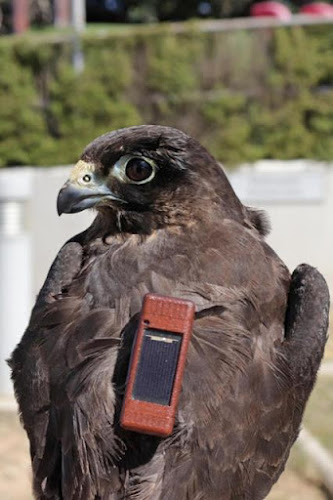The Akrotiri Environmental and Education Centre joined forces with the Cyprus Republic’s Game and Fauna Service to successfully fit a GPS transmitter to Eleonora falcon which was found poisoned in Pachna village, Limassol, on Sunday.
After being discovered, the falcon was immediately taken to the Game and Fauna Service’s rehabilitation centre in Nicosia for treatment, a press release from the Bases said on Thursday.
When it was considered healthy enough to fly again, the falcon, which is a migrant breeder in Cyprus, was fitted with the transmitter to allow experts to monitor its progress and verify that it is moving freely and can feed and survive in nature.
Dr Thomas Hadjikyriakou, the manager at the Environmental Centre, said the GPS tracking was useful for many different reasons. He explained: “Transmitters provide useful data on species ecology, including habitat preferences, feeding habits, as well as providing information on potential threats. “This information allows for more targeted conservation measures to be taken by the authorities in both the SBA Administration and the RoC, as well as more widely across the species range.”
The Eleonora falcon breeding population is distributed along a narrow zone from the Canary Islands on the west, through the Mediterranean, to Cyprus in the east and during the past 10 years, extensive research at the Environmental Centre has revealed approximately 140 pairs breed on the south of the island, from Akrotiri in the east, to Petra tou Romiou on the west, both within protected, designated areas of the Sovereign Bases Areas and the RoC.
Bases conservationists have developed an excellent working relationship with their RoC counterparts and according to Mr Hadjikyriakou, it has played a major role in the success of the joint efforts.
He explained: “We work very closely with the Game and Fauna Service of the RoC, joining efforts for bird conservation and protection. This includes anti-poaching operations, field conservation measures, species population monitoring, the rescuing of injured birds and monitoring bird species movements with the use of transmitters and rings.
“We have successfully fitted various species with transmitters, including a Flamingo, which is currently in Turkey and a Honey buzzard, which wonders around the hillsides over Limassol. “We also work together to analyse long-term monitoring data on Griffon vultures through transmitters.”
